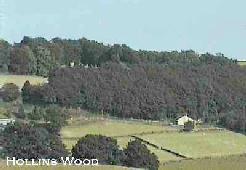|
|

The Constable |
In the beginning - - - There were always people living in the Halifax area. Not that it was known as that 5000 years ago, but the flat land to the east plus plenteous water had induced wandering homosapiens to use the area as a permanent home. From time to time marauders had passed through the area and the residents had taken to the hills. Or to be more precise, the moor lands. These were the tops of the flattened hills where the climate was not so hospitable, snows in winter and frequent fogs and damp all the year round. So it is in one of these areas that a group of people established a more or less permanent home. All were related and outsiders who came in were assimilated into the society. There was no need for formal names nor indeed formal ownership of land, the leader controlled the area and was responsible for the running of the clan. And so their life had existed for hundreds of years. But progress is inevitable and there was a need for better control in a larger area, so the King appointed Constables, who were respected members of the community, to uphold his rights and maintain order. One such area was centred at the township of Warley in Yorkshire. | |
Roman coins have been found |
Early British remains have been found in and around Warley
- battle axe heads of green and
black flint, as well as cinerary urns containing the
bones and ashes of aboriginal Britons who may have
perished in some skirmish or great fight with the Romans.
It is probable that so wild, savage, bleak and
inaccessible a district, with such a climate, must have
frightened the Romans, and no doubt this district was
used as a refuge for the Britons who were driven there
from the places where the Roman colonists settled. Of
Saxon times, there is substantial evidence of the
occupation by the hard
Norsemen Ancestors in the
names of various townships, Werla (Warley) being only one
instance.
In the Doomsday book, that survey and register of land made by Duke William of Normandy, we get the first documentary notice of the Berewicke of Werla feslei, just 4 or 5 miles from Halifax and over looking the pretty vale of the Calder river. Today it is called Warley. |
|
Midgley and Werloweley in the skyyrack |
In 1371 there was a constable
appointed by the king who named himself Johanus de Morgateroyde
, and this is the first recorded instance of use
of the name. Literally meaning John of Moor Gate Royde or
'the clearing on the lane or way to the moor'.
Indeed there is such a place and a great house is built
there even today. Not the original but commanding a
prominent position above the neighbouring lands as indeed
the house of Murgatroyd must have once done. As Bill Murgatroyd has written:
|